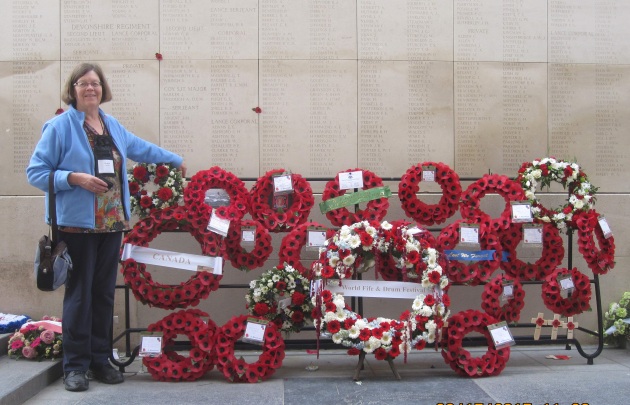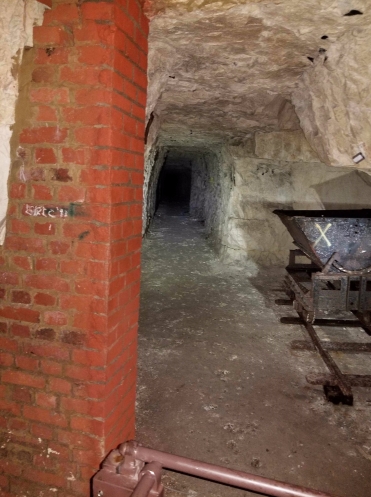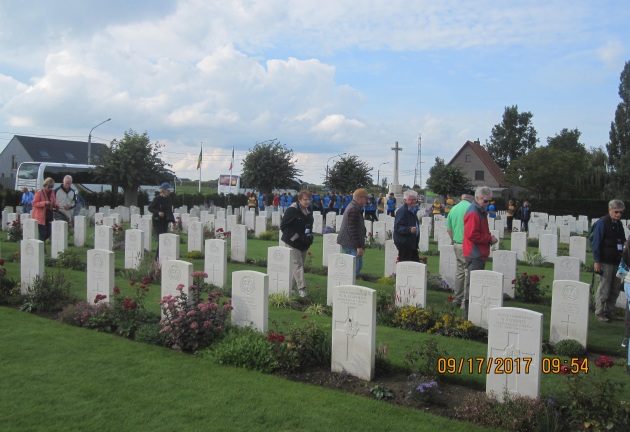In September 2017, my husband and I spent two weeks touring World War I battlefields in Belgium and France, a tour run by Road Scholar. Of course, we are in the midst of the Centennial of the Great War, an opportune time to visit. We were fortunate to have as our tour guide in Europe a retired British Army Major, who has been a battlefield guide for twenty years.
I’ve had a hard time processing everything we learned and saw during our trip. We had done a lot of preparatory reading, but the reality of the death and devastation caused by the war was stunning. Thankfully we stayed in lovely places and ate fabulous French food, which mitigated the somber places we visited. Rather than give you a travelogue, I thought I would highlight a few of the places.
I would just like to remind you that after some initial advances by the Allies- Britain and France- and the Axis- Germany and Austria-Hungary- the war settled to a stalemate reaching from Belgium at the north through France, ending in the mountains at the border of France and Switzerland at the south. Opposing lines of trenches faced each other and the same ground was fought over for four years.
We visited the city of Ypres (Ieper) in Belgium, a medieval city which was almost totally destroyed by the Germans during the war. The medieval cloth hall, constructed about 1300, was one of the largest commercial buildings anywhere when built and a rare survival- until the Germans bombed it. After the war, it was totally rebuilt as it had been, and is now a huge museum about the war. The day we were there, an international fife and drum corps convention was going on in the large open square in front of it, and we met the corps from Macedon, NY, near Rochester!

Ypres was a walled city and after the war the Menin Gate- the gate for the road leading to the city of Menin- was rebuilt as a war memorial. It is inscribed with the names of 55,000 British soldiers who died in the area during the war and whose whereabouts are unknown. Every once in a while, another soldier’s body is discovered. 100 years later, and buried locally. If he can be identified, the name is removed from the wall.

The Cloth Hall in 1917

The Cloth Hall rebuilt. It houses the In Flanders Fields Museum
Every night at 8 since its completion in 1928 there has been a Last Post ceremony conducted to honor the sacrifice of British soldiers, organized by the local fire brigade, except for a period during World War II. The night we were there, buglers from a British Army unit participated. During the ceremony, anyone who wishes may lay a wreath to honor the soldiers. My husband and I asked to participate and laid a traditional poppy wreath. Behind us in the line of those laying wreaths were members of a teenaged rugby team from Australia. A large crowd of people watched.

The Menin Gate..looking into the city of Ypres. After the Last Post Ceremony in which we participated

We went back to take a picture the next day- this rack houses the wreaths placed the night before. You can see a few of the names of missing soldiers engraved on the walls of the gate.






















